Castle Criccieth (or Castell Cricieth as it known in Wales) has sat for centuries atop a craggy peninsula overlooking the Termadog Bay in Criccieth, Gwynedd in North Wales. This native Welsh fortress, built by Llywelyn the Great and positioned on the headland between two beaches, has since witnessed heavy modifications and a revolving door of inhabitants since its initial construction in the 1230s. But, despite its scenic location, history has shown that it wasn’t all serene beauty and lush landscapes at Criccieth.
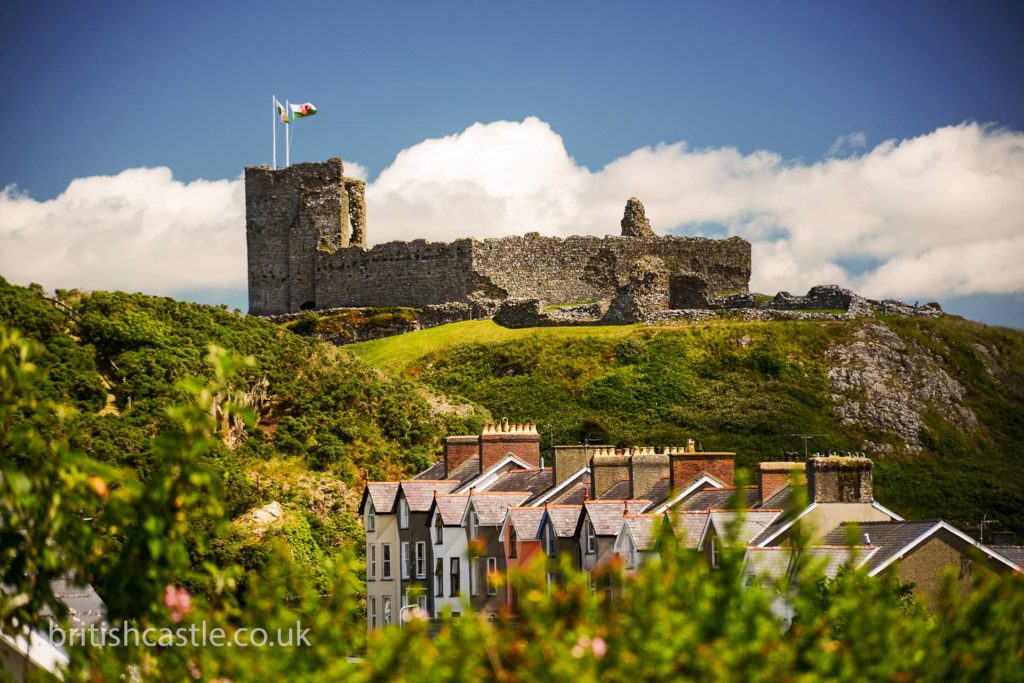
Like many of the existing structures and Welsh fortresses at the time, it was captured by Edward I in 1283 as part of his invasion and conquest of North Wales––in what would eventually lead to the instalment of the Castles and Town Walls in Gwynedd. Despite taking years to build, followed by decades’ worth of changing hands and the appointment of numerous constables in its first 100 years, Criccieth remains a powerful force in Welsh history, and one of the few sites that remain standing to this day. Despite its weathered façade and crumbling interiors, this castle still commands attention.
History of Criccieth Castle
The commencement date of construction at what would become Criccieth Castle is up for debate. As a concept, the fortress is believed to have first been conceived in the 1230s––a relatively late period for initiating a castle in Wales by the Welsh.
The earliest known mention of Criccieth Castle appears in the Welsh Chronicles, the Brut y Tywysogyon, in 1239, when Gruffydd ap Llywelyn (son of Llywelyn ap Iorwerth, or ‘Llywelyn the Great’) was imprisoned within the castle walls following the decree by his half-brother Dafydd. It is estimated that Llywelyn the Great began work on the stone fortress just a few years before his son’s imprisonment.
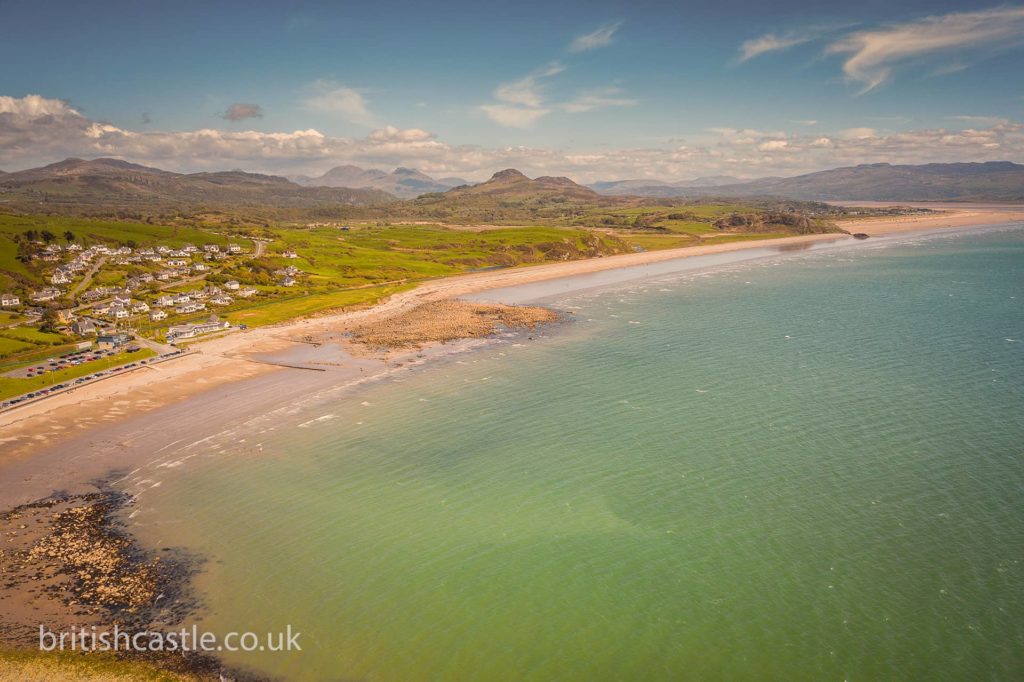
As was typical for many of the great Welsh castles, the location of Criccieth Castle was entirely strategic––the placement at its current site allowed a Welsh garrison access to supplies by the sea. It was also believed that on a clear day, anyone standing on the hilltop could see as far as Snowdonia to the north; monitor movement across the entire Lleyn Peninsula to the west; and even make out nearby Harlech Castle, across Tremadog Bay to the southeast.
Architecture and design of Criccieth Castle
Prior to Castell Cricieth, the site on which it stands was most likely utilized as a hillfort by Iron Age people who populated the region around the time of Christ. Further complicating the date of construction, an existing motte and bailey structure stood at the nearby site of current Criccieth; and, although the stone castle was believed to have been assembled in the 1230s, there were multiple building phases, as well as several periods of remodelling that took place.
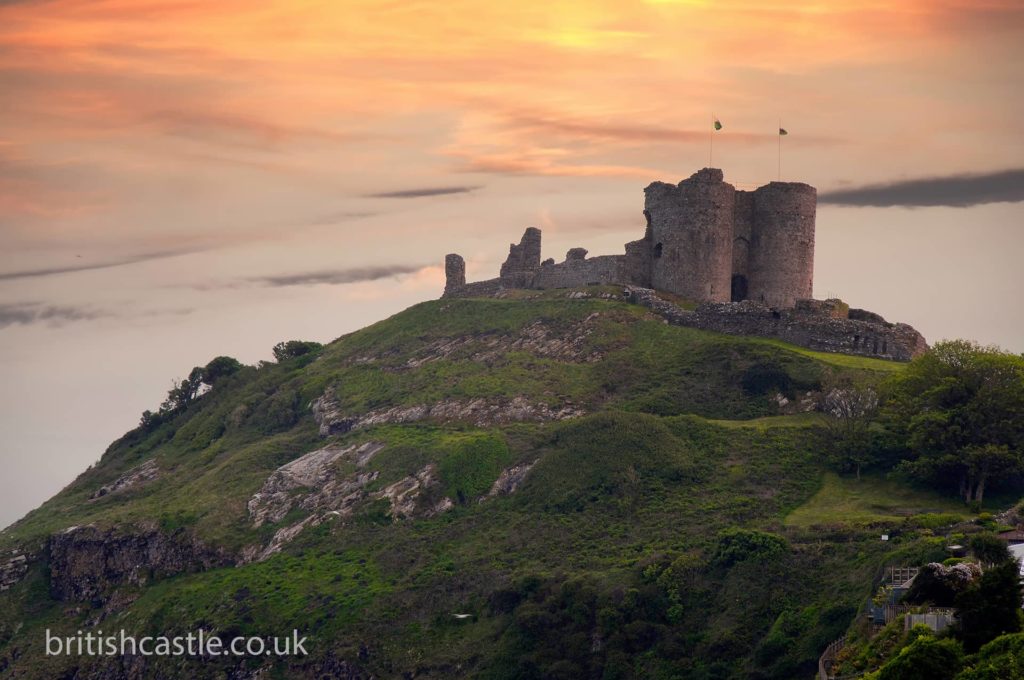
However, it is generally accepted that Llywelyn the Great began the masonry of the fortress’s inner ward, following up with a protective gatehouse and twin D-shaped towers shielded by a portcullis and gate. The towers of this gatehouse provided accommodation, as well as defensive arrowslits, while the passage featured murder holes.
Llywelyn the Great’s castle consisted of a standard diamond-shaped inner ward, the simplicity of which greatly contrasts with the complexity of the great gatehouse, although this could be explained away as requiring stronger defences at the landward side, and less around the portions of the castle which faced out to sea.
The second known building phase at Criccieth Castle was probably undertaken around the 1260s by Llywelyn ap Gruffydd (also known as ‘Llywelyn the Last’), grandson of Llywelyn the Great, whose primary contribution was the curtain wall, which surrounded the promontory and formed the outer ward. This addition also contained a large, rectangular tower (now known as Montfort Tower) at the southeast corner, which was likely a residential building that served as the keep. Paradoxically, Llywelyn the Last, having installed these subsequent defensive elements, essentially created a “concentric castle”, a design style most closely associated with Edward I of England––whose role in the third and final building phase at Criccieth Castle was major.
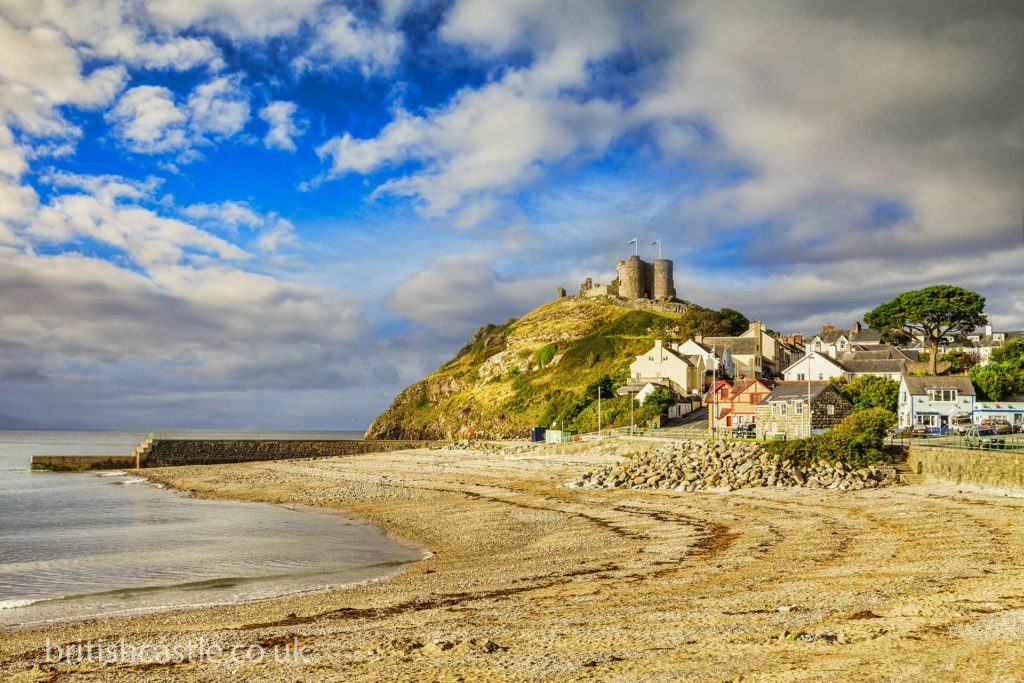
In 1282, England’s King Edward I, working alongside royal architect James of St. George, led the brutal charge into Wales––with the support of a massive army of soldiers––pushing north from Carmarthen, eventually gaining control of the Conwy valley. In addition to building many of his own castles throughout Wales, he wielded control over many of the existing fortresses in the area, demolishing many and using the materials to fortify his new builds. Or, in the case of Castell Cricieth, providing his Edwardian flourishes in the form of extensive renovations.
The third building period at Criccieth occurred between 1283 and 1292 when Llywelyn the Last lost control and ceded power to Edward I, who carried out a massive overhaul of the fortress’s interiors and exteriors. These refinements included the addition of another tower (now known as the Leyburn Tower) to the inner ward, building height onto the existing D shaped gatehouse towers, and a new barbican incorporated into the outer curtain wall.
These remodelling changes, which fell under the direction of Edward I, were conceived and implemented by the King’s mason, James of St. George, whose concentric design was a prominent feature of many of the Castles and Town Walls of King Edward I in Gwynedd.
Despite his affiliation with Edward’s kingdom, there is little known about the early life and times of Master James of St. George, other than the leftover castles and walls bearing his name. Considered to be one of the master architects of the European Middle Ages, his association with Edward during the Welsh Invasion of 1282 remains his most celebrated achievement.
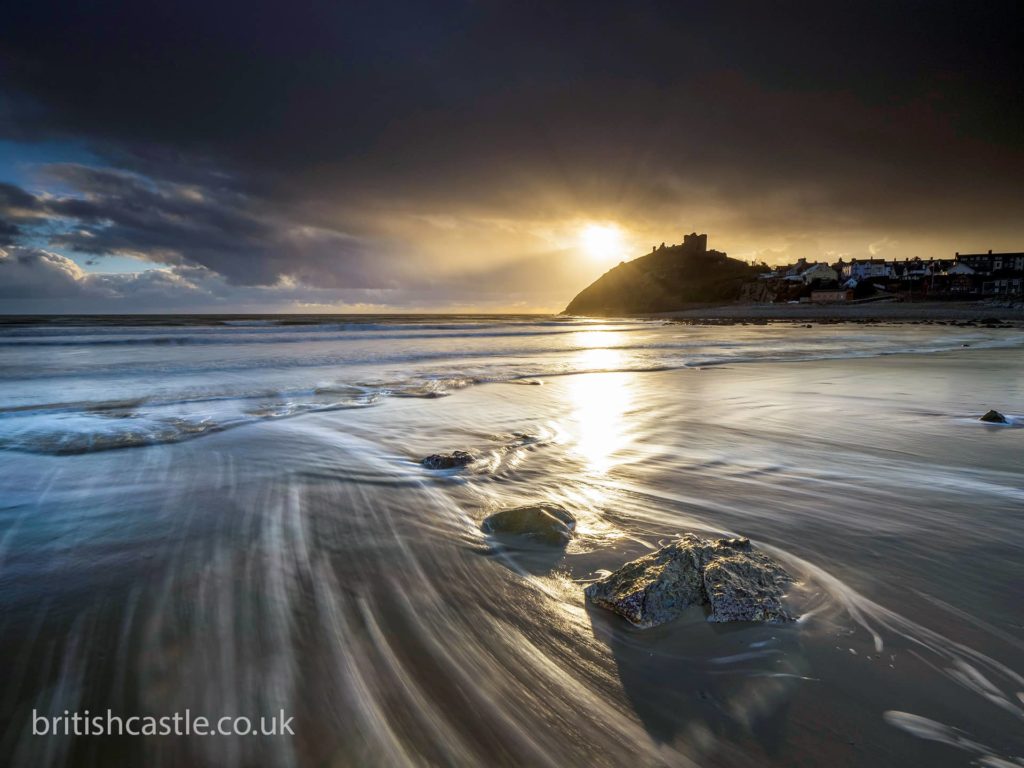
James of St. George was appointed Master of the Royal Works in Wales around 1285, giving him full control of the construction of all fortresses, including the renovations to Criccieth Castle, but also to nearby Harlech Castle.
One of the more revolutionary contributions James of St. George made to Criccieth was the fortification of the looming Engine Tower (no longer standing) ––which would eventually feature a powerful and innovative new weapon that changed the face of military warfare at the time: the siege engine, or catapult.
Criccieth Castle throughout the years
Criccieth Castle maintained a brief, albeit notable, lifespan. But not long after its overall completion in 1292, the now-English stronghold became under siege by rebels, led by Madog ap Llywelyn (a distant relative of Llywelyn the Last), during the Welsh Revolt of 1294 – 1295. While the garrison held out for several months before being reclaimed, it never truly recovered to its former glory and it was used mostly as a prison for the next century.
In 1404, the Welsh captured Criccieth again during the independence rebellion led by Owain Glyndŵr. The rebels were merciless and tore down the powerful structure and set the fortress alight––to this day, some of the scorched stonework can be seen by eagle-eyed viewers. In all, a solid stronghold that faced years of revitalization, only to be toppled by the people who had originally conceived it as a prime defensive site. Mostly ruins since the 15th century, Criccieth remained a draw to historians, nationalists and artisans alike.
Struck by the eerie beauty and scenic landscape around Criccieth’s remains, painter J.M.W. Turner used the former fortress as a subject of one of his many colour studies in 1836, showcasing the castle on its headland overlooking Tremadog Bay to the south. It currently resides in London’s Tate Britain Gallery, along with Turner’s paintings of Conwy Castle and Harlech Castle.
The twin-towered gatehouse is Criccieth Castle’s most prominent and intimidating feature and one that is, again, most likely attributed to Llywelyn the Great. However, some have argued that the towers are the result of Edward I’s renovations––a bone of contention that remains to this day: are the remains at Criccieth a mostly Welsh landmark, or a refurbished English invention? The conversation is encouraged when visiting the site, although Cadw, the historic environment service branch of the Welsh Government, insists that the gatehouse and all attached attributes originated in Wales.
Nowadays, Criccieth Castle is a historical tourist site overseen and managed by Cadw, where it is preserved as a historic site. The current fortress, available for all to see and very popular with visitors from across the globe, features amenities like on-site exhibitions, venue hires for filming and events, and a gift shop.
Not to mention, a trip to this spectacular coastal castle, and its equally charming town, make Criccieth a perfect outing for experiencing some of the more historic and cultural attractions of Wales.